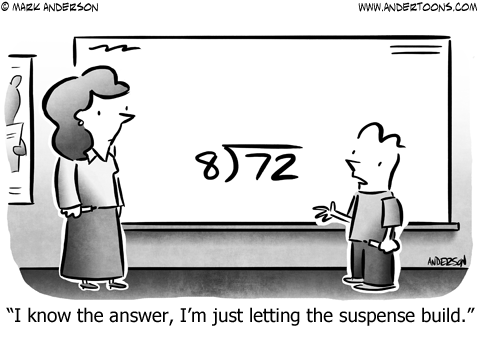
Today's Savings Rates
The following table shows current rates for savings accounts, interst bearing checking accounts, CDs, and money market accounts. Use the filters at the top to set your initial deposit amount and your selected products.
What is the Rule of 72?
For any given sum, one can quickly estimate the doubling period or the rate of compounding by dividing the other of the two into the number 72. It is a handy rule of thumb and is not precise, but applies to any form of exponential growth (like compound interest) or exponential decay (the loss of purchasing power from monetary inflation).

Examples
How long would it take for a person to double their money earning 3.6% interest per year?
72 / 3.6 = 20 years
How long would it take money to lose half its value if inflation were 6% per year?
72 / 6 = 12 years
Doubling Time Table
| Growth Rate |
Time to Double |
| 1% |
72 |
| 2% |
36 |
| 3% |
24 |
| 4% |
18 |
| 5% |
14.4 |
| 6% |
12 |
| 7% |
10.29 |
| 8% |
9 |
| 9% |
8 |
| 10% |
7.2 |
| 11% |
6.55 |
| 12% |
6 |
| 13% |
5.54 |
| 14% |
5.14 |
| 15% |
4.8 |
| 16% |
4.5 |
| 17% |
4.24 |
| 18% |
4 |
| 19% |
3.79 |
| 20% |
3.6 |
| 21% |
3.43 |
| 22% |
3.27 |
| 23% |
3.13 |
| 24% |
3 |
| 25% |
2.88 |
| 26% |
2.77 |
| 27% |
2.67 |
| 28% |
2.57 |
| 29% |
2.48 |
| 30% |
2.4 |
| 31% |
2.32 |
| 32% |
2.25 |
| 33% |
2.18 |
| 34% |
2.12 |
| 35% |
2.06 |
| 36% |
2 |
| 37% |
1.95 |
| 38% |
1.89 |
| 39% |
1.85 |
| 40% |
1.8 |
| 41% |
1.76 |
| 42% |
1.71 |
| 43% |
1.67 |
| 44% |
1.64 |
| 45% |
1.6 |
| 46% |
1.57 |
| 47% |
1.53 |
| 48% |
1.5 |
| 49% |
1.47 |
| 50% |
1.44 |
| 51% |
1.41 |
| 52% |
1.38 |
| 53% |
1.36 |
| 54% |
1.33 |
| 55% |
1.31 |
| 56% |
1.29 |
| 57% |
1.26 |
| 58% |
1.24 |
| 59% |
1.22 |
| 60% |
1.2 |
| 61% |
1.18 |
| 62% |
1.16 |
| 63% |
1.14 |
| 64% |
1.13 |
| 65% |
1.11 |
| 66% |
1.09 |
| 67% |
1.07 |
| 68% |
1.06 |
| 69% |
1.04 |
| 70% |
1.03 |
| 71% |
1.01 |
| 72% |
1 |
| 73% |
0.99 |
| 74% |
0.97 |
| 75% |
0.96 |
| 76% |
0.95 |
| 77% |
0.94 |
| 78% |
0.92 |
| 79% |
0.91 |
| 80% |
0.9 |
| 81% |
0.89 |
| 82% |
0.88 |
| 83% |
0.87 |
| 84% |
0.86 |
| 85% |
0.85 |
| 86% |
0.84 |
| 87% |
0.83 |
| 88% |
0.82 |
| 89% |
0.81 |
| 90% |
0.8 |
| 91% |
0.79 |
| 92% |
0.78 |
| 93% |
0.77 |
| 94% |
0.77 |
| 95% |
0.76 |
| 96% |
0.75 |
| 97% |
0.74 |
| 98% |
0.73 |
| 99% |
0.73 |
| 100% |
0.72 |
Is the Rule of 72 Exact?
No. It has slight rounding issues, though is quite close.
The formula for annually compounded interest is P [1 + (r / n)]^(nt) where:
- P = principal
- r = annual interest rate as a decimal
- n = frequency with which interest is compounded annually
- t = term of loan or investment in years
Why 72?
The log of 2 is 0.69. For continuously compounded interest the "rule of 72" would actually technically be the rule of 69.
2P = P [1 + (r / n)]^(nt)
t = ln(2) / r
The natural log of 2 is 0.69. So you would dive 69 by the rate of return.
Most interest bearing accounts are not continuosly compouding. If you solve the above equation again and use annually compounded interest then the 0.69 mentioned above ranges between 0.697 and 0.734. 72 was chosen as a reasonable factor in part because it is easy to divide into by other numbers and it is a decent approximation for the fairly low rates of interest typically associated with savings accounts or secured consumer lending.
If one were to use credit cards with a much higher interest rate like 20% to 25% APR then the 72 would be closer to being in the 76 to 77.7 range.
Change privacy settings


